Glacier du MiageGlacier du Miage is the longest in the Italian Alps (though not the largest by area). It flows from Col de Bionnassay at 3892 m via the Glacier de Bionnassay for 10 km into Val Veney at an elevation of about 1770 m. For more details about this glacier refer to the text at the bottom of the page. |
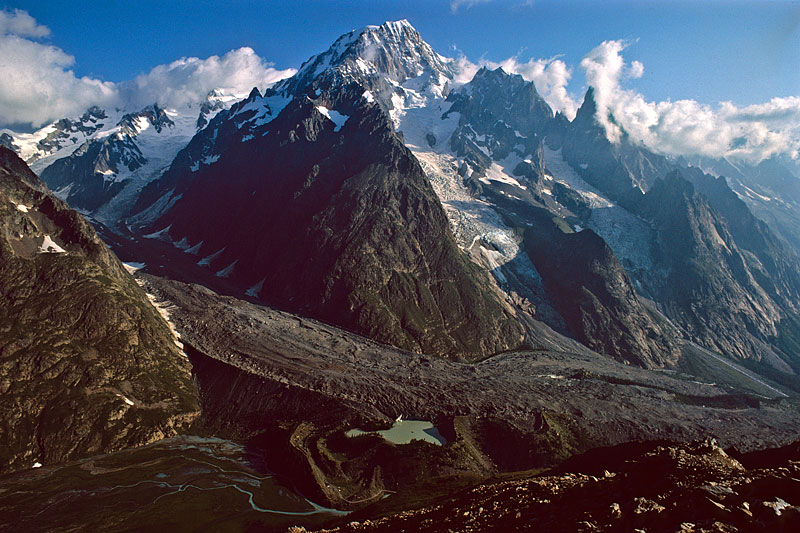 Mont Blanc de Courmayer (4765 m) rises above Glacier du Miage. The steep glacier flowing from the summit is Glacier du Breuillat and to its right Glacier de Frźney. July 1982. JA. | 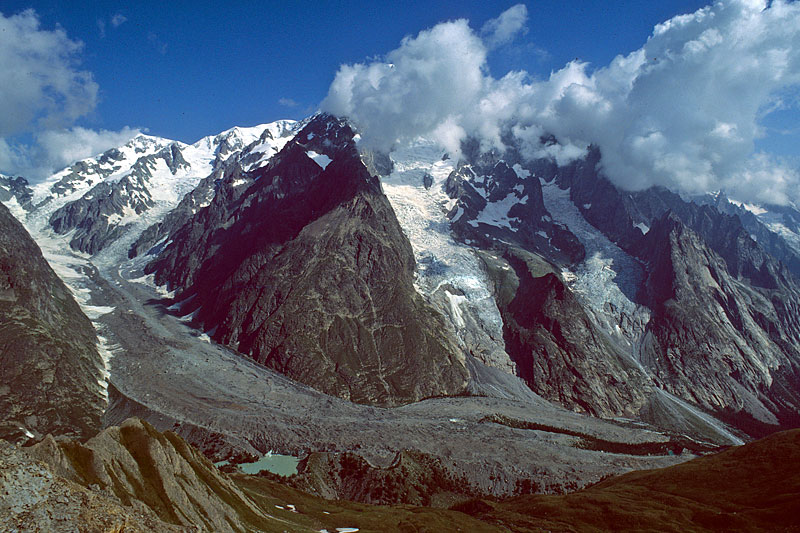 Similar photo as the previous one, taken from a somewhat higher location. Note the snow avalanche deposits on Glacier du Miage in the left part of the photo. July 1982. JA. |  Telephoto of Lac du Miage, which is enclosed by the Little Ice Age moraine and dammed by the glacier. July 1982. JA. | 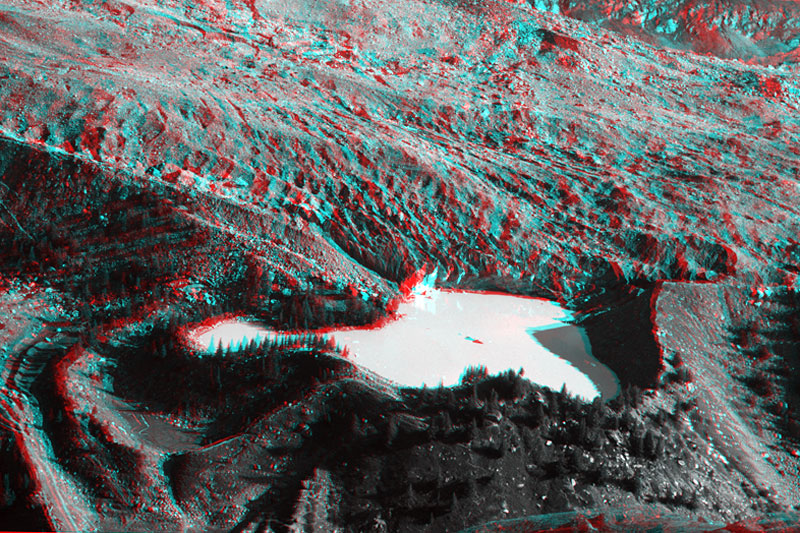 Same view as in the previous photo, but shown as stereo anaglyph image. To see the 3D-effect, red-blue glasses are required. JA. |
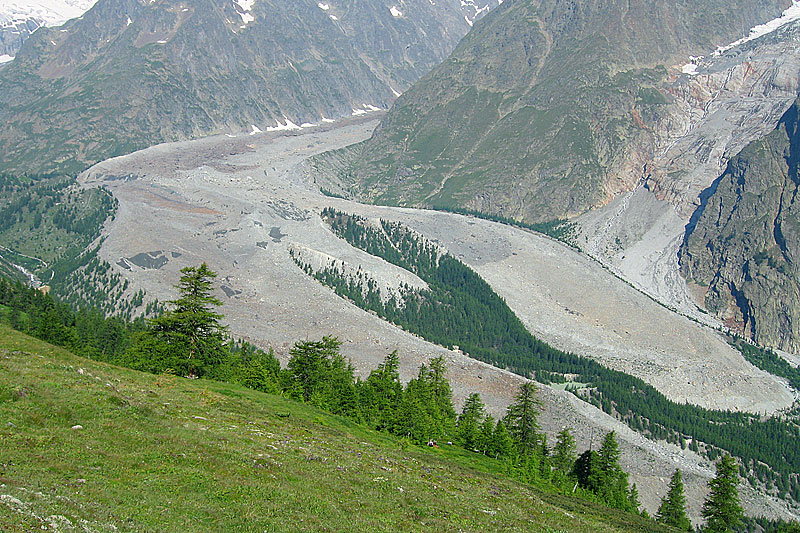 Debris-mantled tongue of the glacier viewed from the Tour du Mont Blanc footpath on the south side of Val Veny. The strip of forest, which divides the glacier tongue in two, is called Jardin du Miage. July 2007. MH. |  Contrast between rusty weathering metamorphic rock (left), and pale-coloured granite (right). The lobate form of the former reflects rockfalls from the side of the glacier. The turquoise of Lac du Miage is caused by suspended sediment. July 2007. MH. | 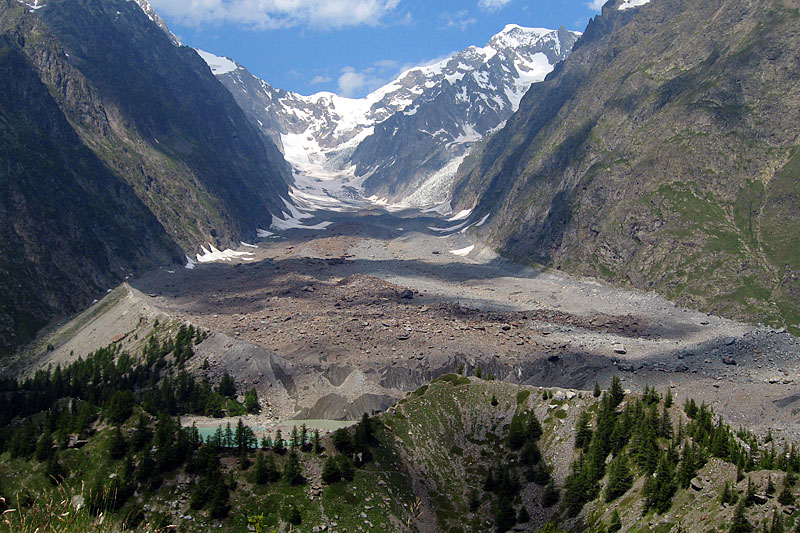 View up the straight-sided, almost U-shaped, trough of Glacier du Miage. The glacier is debris-mantled for most of its length. The peak at the head is Dōme de Goūtier (4306 m). July 2007. MH. | 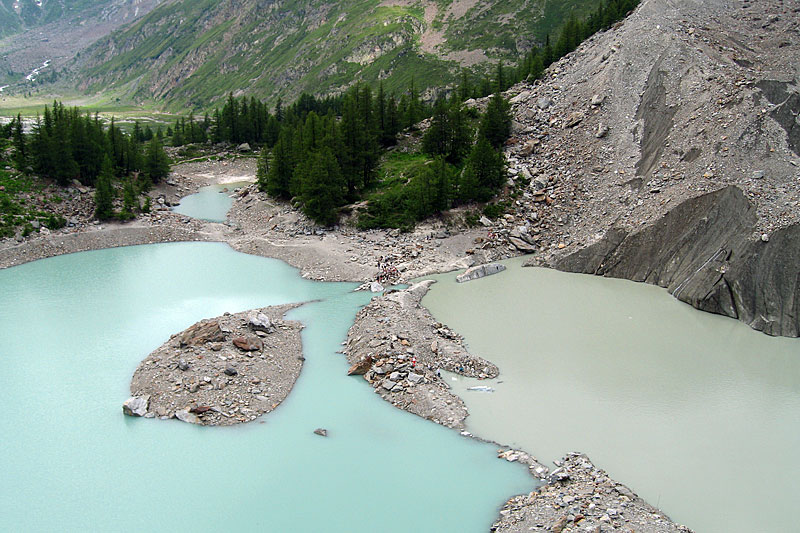 Two partially submerged ridges of ice-cored debris viewed from the crest of the Little Ice Age moraine. The colour of the water reflects different suspended sediment concentrations (greyish brown: more sediment). Note people on ridge. MH. |
 Lac du Miage in 1982. Compare with the next image taken from nearly the same position. JA. | 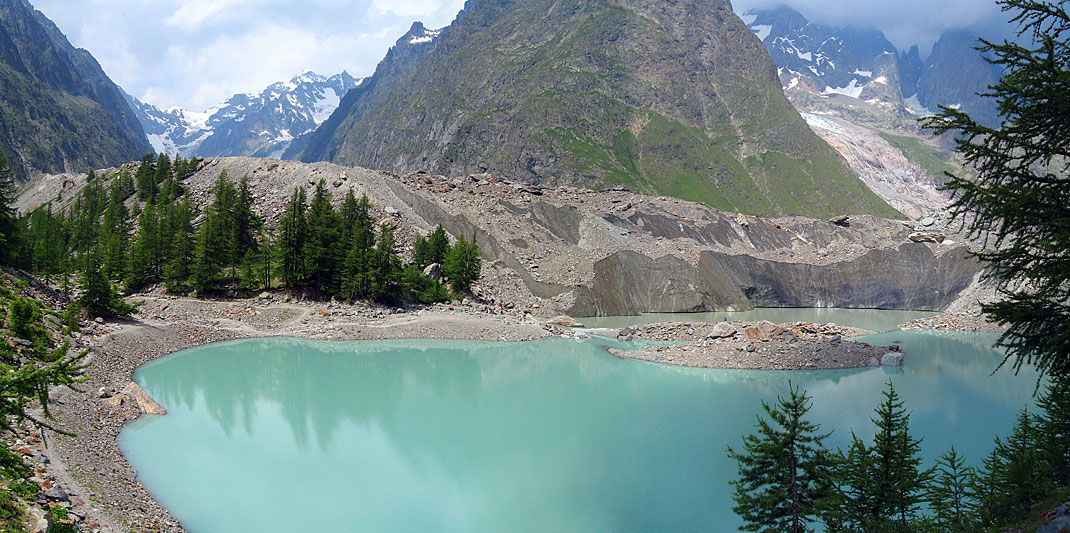 Lac du Miage in July 2007. The lake level is lower than in 1982 and fewer icebergs are produced. MH. | 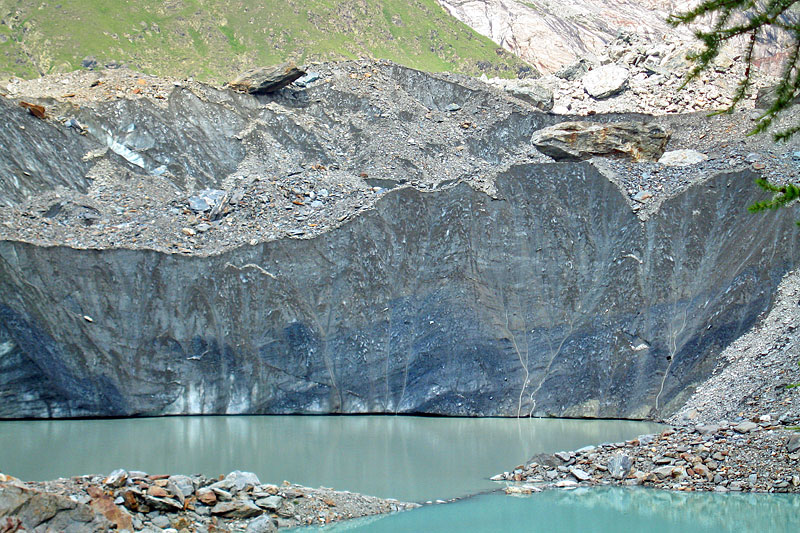 Layering in the ice (foliation) exposed in the debris streaked face of the Lac du Miage ice cliff in July 2007. Several metre-long boulders are almost ready to fall into the lake. MH. | 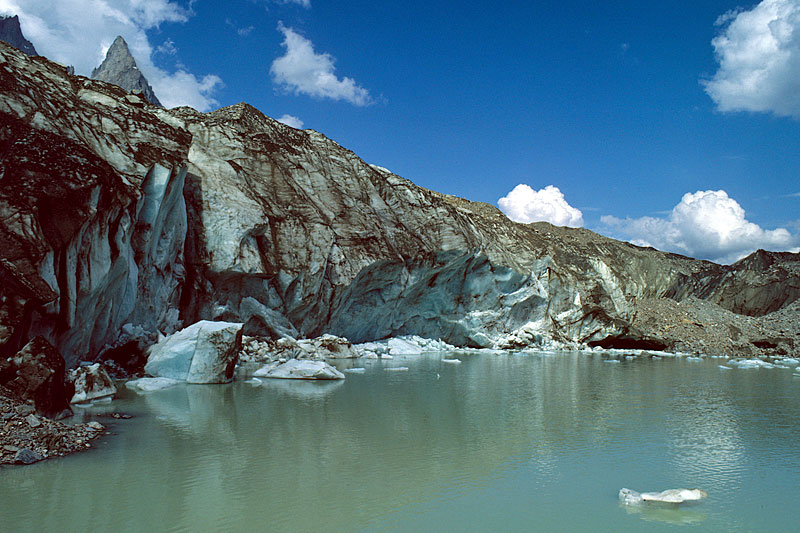 Undercut ice cliff of Glacier du Miage, with icebergs. July 1982. JA. Calving events sometimes caused accidents as waves generated by the icebergs washed tourists into the lake. 1982. JA. |
 Warning notice about the dangers of calving on the crest of the moraine between Bar Combal and Lac du Miage. In spite of this, many tourists risk injury by approaching the ice cliff too closely. MH. | 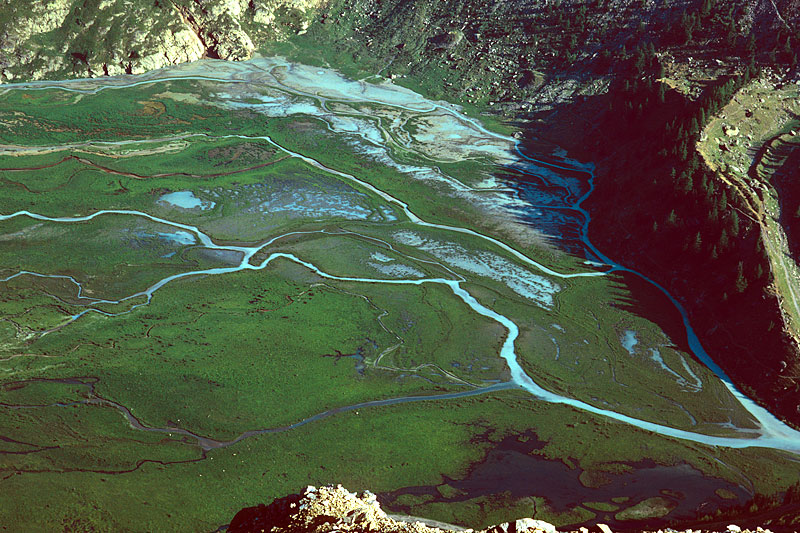 Braided stream flowing across the former lake bed of Lago di Combal which was formerly dammed by the moraine of Glacier du Miage to the right. The meltwater in the stream originates from Glacier de la Lex Blanche and Glacier des Echelleties. 1982. JA. | 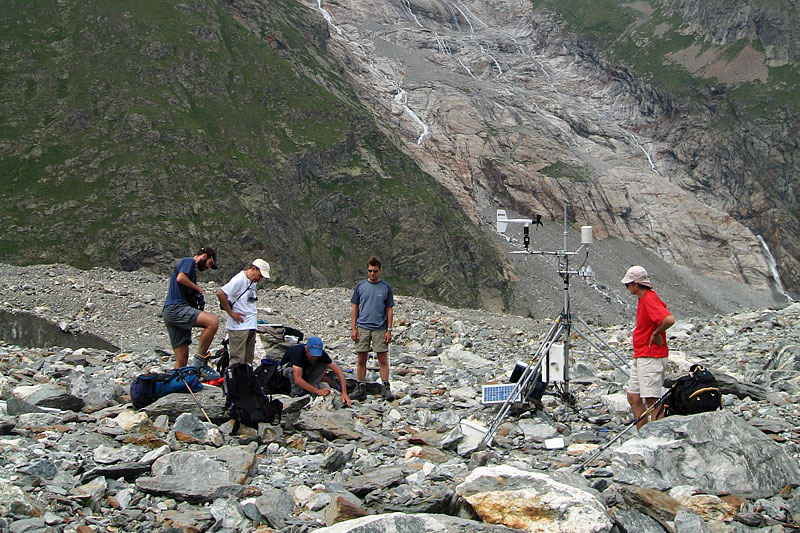 A meteorological station, a joint Italian-British venture, on the debris-mantled snout of Glacier du Miage to record the energy balance and microclimate. Visiting scientists are from Italy, Britain, America, France and Switzerland. July 2007. MH. | 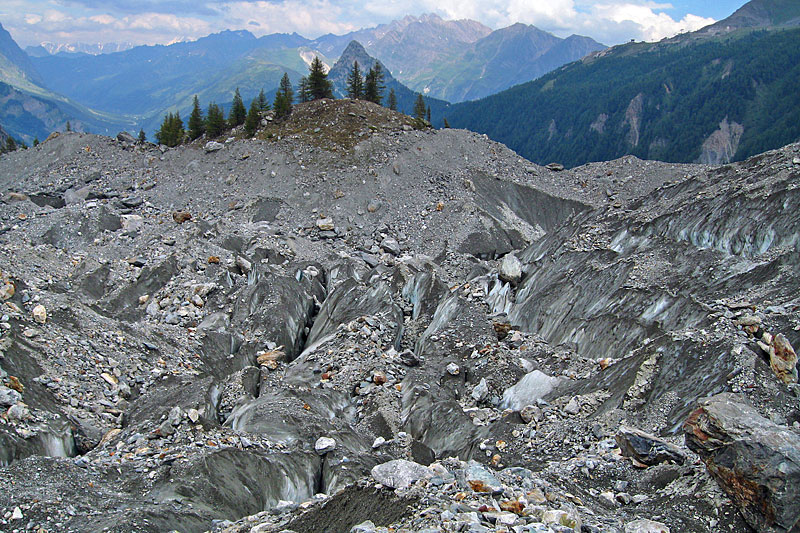 After a period of thickening of the glacier in the 1970s and 1980s, the glacier is now thinning dramatically. Because debris protects the ice from ablation to some extent, debris-mantled glaciers tend to waste downwards before showing signs of retreat of the snout. MH. |
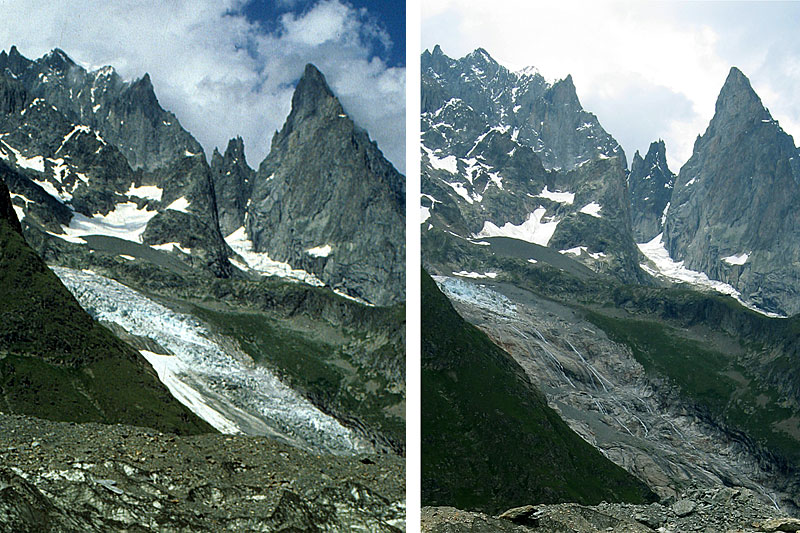 Glacier du Breuillat in 1982 (left) and 2007 (right), with the peak of Aiguile Noire de Peuterey (3773 m). The glacier has receded up the rock slope, and by July 2007 was almost out of sight from this viewpoint on Glacier du Miage. JA and MH. | | | |
|
Photos by Jürg Alean (JA) and Michael Hambrey (MH).
Several tributaries feed Glacier du Miage, but with 21st century recession are in danger of being disconnected from the main glacier tongue. Avalanches supply much of the accumulation necessary to sustain this glacier. The steep rocky flanks of the main trough supply enough debris to completely cover the tongue, and this thickens towards the snout where the tongue is split by a unique nature reserve, the Jardin du Miage. This debris slows down ablation towards the snout, so the glacier responds relatively slowly to mass-balance changes, and little change in the frontal position is evident. Rather, during the positive mass balance years of the 1970s and 1980s the glacier thickened and, in places, almost breached its Little Ice Age moraine, but during the 21st Century, thinning has been taking place at an accelerating rate.
An unusual and visually stunning (but hazardous) feature of this glacier is the Lac du Miage, which is enclosed by the Little Ice Age moraine and dammed by the glacier margin. The internal plumbing of the glacier affects the lake level on a day-to-day basis. The response of this debris-mantled glacier to the warming climate is being investigated by a joint Italian-Scottish research programme. We thank Prof. Claudio Smiraglia (University of Milano) and Dr Ben Brock (University of Dundee) for guidance to this glacier.
|